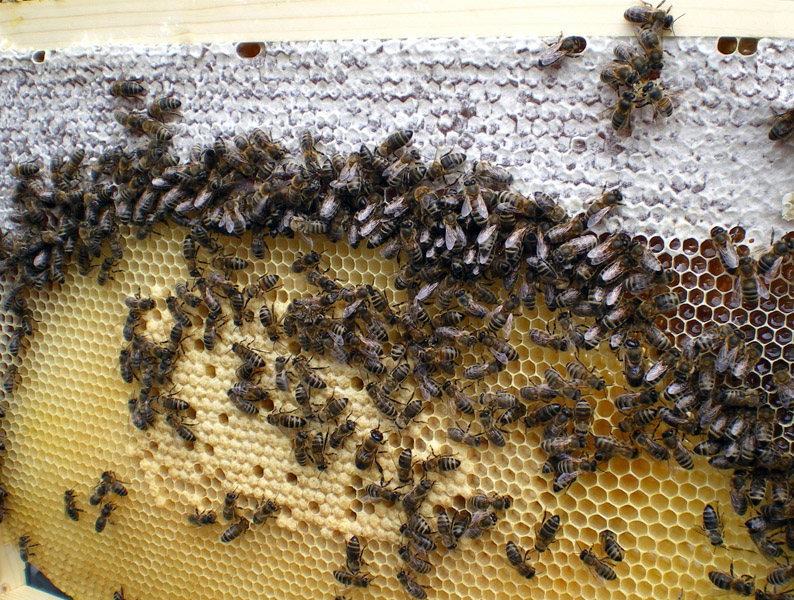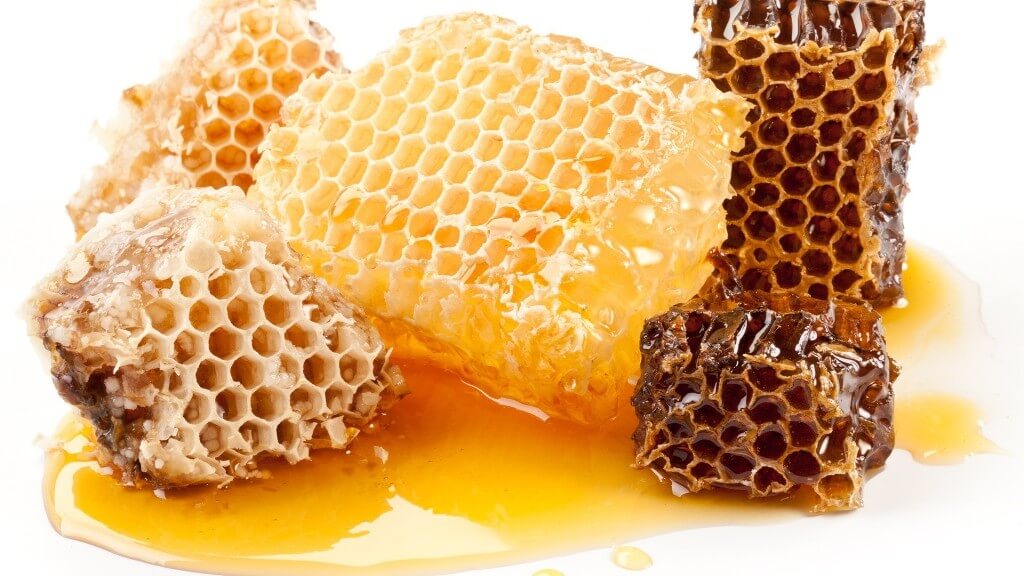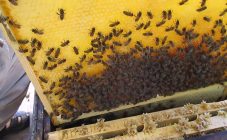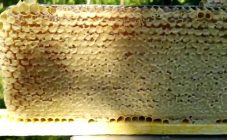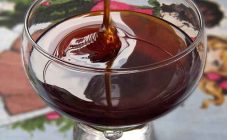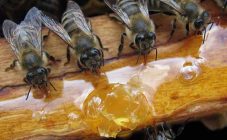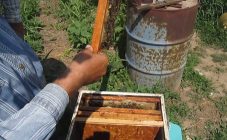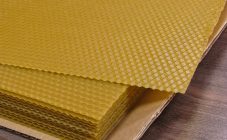Content:
After choosing a place to live, bees begin to build honeycombs. The whole life of insects is concentrated in them: offspring are grown, food for the life of bees is accumulated. In difficult winter periods, it is thanks to the combs that insects survive.
What honeycombs look like
A honeycomb is a special layer of cells. The thickness is 25 mm, the height and width depend on the dwelling of the bees. Layers of cells are attached to an impromptu "ceiling", then descend vertically downward. The distance that forms between adjacent structures is called a street. Most often it is 10-12 mm. This gap is necessary so that insects on different combs do not touch each other. This is a unique design. Many are interested in what and how bee honeycombs are made.
Each cell is represented by a hexagon made of wax. With numerous experiments, scientists have found that it is this form that gives the maximum amount of space at the minimum cost of construction.
How and from what bees build honeycombs
To understand the internal structure, it is important to know what and how bees make honeycombs. The insect has special glands that produce wax. It is this material that is used for construction. Special wax glands are located on the abdominal rings. In a worker bee, the greatest amount of wax is released from 12 to 18 days of life. One scale on the abdomen of an insect has a weight of 6.8 mg; for the construction of one family, 6-8 kg of material are required.
In order for the bee to be able to produce the required amount of wax for construction, it needs to obtain sufficient quantities of pollen and nectar. In order for insects to get 1 kg of building material, 3 kg of honey will be required.
Honeycomb construction starts at the top. This process is very interesting and unique, so it is worth taking a closer look at how bees build honeycombs. They build a chain: the first bee clings to the top of the nest, the second clings to its hind legs. Thus, it will turn out to build the entire structure. Those insects that secrete wax run up the chain. With their legs and jaws, they grind wax scales from the abdomen, moisten them, mix with the secretions of the maxillary glands. The resulting mixture is divided into pieces and located in the place where construction began. Cell by cell, a beautiful white structure grows.
Than bees seal honey
When the construction is completed, the bees begin to collect nectar and put the honey mass into the cells. Throughout the season, they work to provide themselves with food for the whole winter. The final and most crucial stage in the construction of honeycombs is their sealing.
After the honeycombs are filled to a quarter (there are always empty honeycombs for the development of productivity), the bees begin to carry out artificial ventilation. Insects ventilate with their wings; from the outside it seems that the hive is buzzing. After the humidity inside drops to 20%, the cells are clogged with a notch.
Zabrus is a special mixture that the bees use to seal the comb. It contains a lot of pollen, wax, propolis and bee bread. It also contains vitamins A, C, E, chitinous substance, various microelements and macronutrients and essential oils.
Sealing honeycomb after pumping
Beekeepers are often engaged in pumping honey twice a season. There are certain rules that guide them when choosing a framework for exemption. Part of the evacuated frames is sent for storage, the other part is placed back into the hive, because the bees have to prepare for winter.
They continue to work and collect honey again by placing it in cells. The sticky mass is sealed under conditions of strict sterility, so that subsequently the valuable product does not begin to ferment. How bees seal honeycombs with honey has already been discussed. It is very easy to understand why the hexagons are clogged. The sweet mass can ferment from the heat in the hive or the ingress of foreign particles. The wax plaques reliably hide the valuable product.
How can you use
The main feature of honeycombs is the naturalness of the product. They may have a light color, which indicates that they have been created recently.
They can also be dark, this indicates that they have been used for a long time. All the enzymes and vitamins that are present in honey are also present in the combs, so they can be used internally and receive benefits for the body.
Bee honeycombs contain a large amount of:
- Vitamins;
- Carbohydrates;
- Beneficial fatty acids;
- Trace elements.
Also a feature of beeswax, which is present in large quantities in neat hexagons, is antibacterial properties. At its core, honeycomb is an excellent absorbent that can remove harmful substances from the body. This product can be used for different purposes.
Since ancient times, honeycombs have been used to strengthen the immune system. It has been noticed that children who are accustomed to chewing honeycombs from childhood are much less likely to get sick, are stronger and more resilient.
Honeycomb wax is an excellent cell generator. It is often used to create various products in cosmetology. Thanks to its antibacterial properties, the honeycomb can be used to speed up wound healing. Honeycomb compresses help restore blood circulation. Wax plaques can be used with equal success (these are the elements that cover the honeycomb of the bee).
Harm
The harm of this product is very relative. It contains a lot of carbohydrates and sugar. Chewed in large quantities can easily cause tooth decay, but regular rinsing of the mouth can avoid this problem.
You should also consider where the product comes from. If bees collect nectar and pollen in ecologically unsafe areas, then when the honeycombs are heated, they can emit carcinogens present in them.
As you can see, a honeycomb is a valuable and useful product that little workers spend a lot of time and effort in creating. It is important to appreciate their work and use a sensibly presented treat, you can get a lot of benefits from using it.
